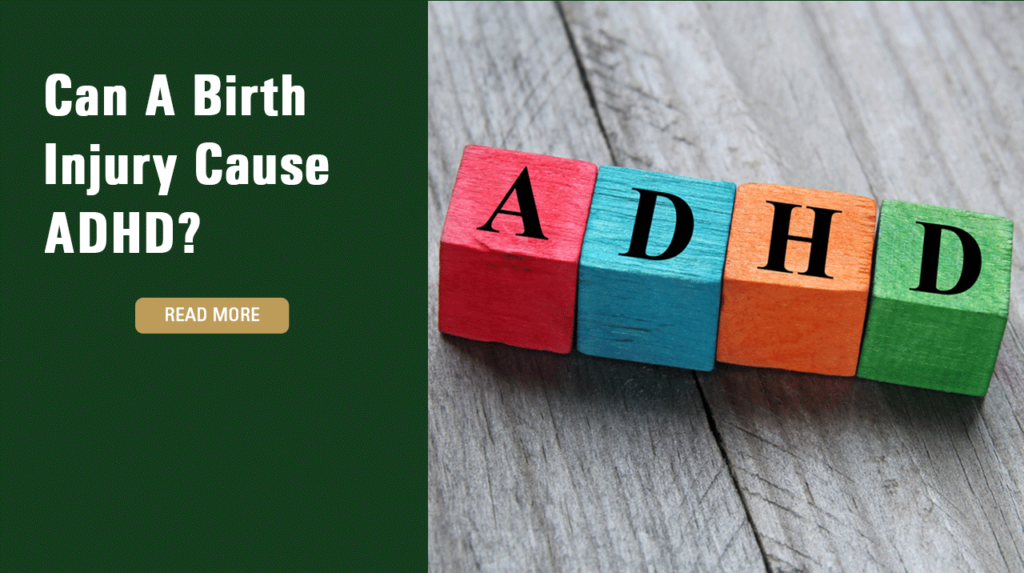Can A Birth Injury Cause ADHD?

Both genetic and environmental factors are associated with numerous mental health disorders. Researchers have found that birth trauma might be linked to children developing attention-deficit hyperactivity disorder (ADHD) in childhood. ADHD is a disorder that can impact a person throughout his or her life, including his or her performance at school and work as well as in his or her personal relationships. The attorneys at Raynes & Lawn can explain more about the potential link between ADHD and birth injuries and review your potential case to determine its viability.
Understanding ADHD
According to the National Institute of Mental Health, ADHD is characterized by a continuous pattern of inattention, hyperactivity, and impulsivity that can interfere with a child’s development or ability to function. People who are diagnosed with ADHD typically experience problems focusing and maintaining attention to such an extent that their quality of life can be diminished if they are not treated. ADHD is common, affecting up to 10% of children in the U.S. Psychiatrists use the diagnostic criteria listed in the Diagnostic and Statistical Manual, Fifth Edition (DSM-5) to diagnose children with ADHD.
The diagnostic criteria for ADHD under the DSM-5 include the following:
- Inattention – Six or more symptoms for children younger than 16 or five or more symptoms for those 16 and older that have lasted for at least six months
- Hyperactivity – Six or more symptoms up to age 16 or five or more for those 17 and older that have lasted for at least six months
- Symptoms began prior to the age of 12
- Symptoms are displayed in multiple settings
- Another mental health disorder doesn’t provide a more appropriate diagnosis
- Symptoms interfere with the child’s ability to function or his or her achievement of developmental milestones
What Are The Symptoms Of ADHD?
If your child suffered a birth injury and you think that he or she might also have ADHD, watch for the following symptoms:
- Ongoing issues with focus and attention
- Forgetfulness
- Easily distracted
- Constant fidgeting
- Excessive talking
- Interrupts frequently
- Frequent outbursts
- Frequently makes careless mistakes
- Difficulty with waiting for a turn
- Trouble following through
Some children might have several of these symptoms but not have ADHD. However, if you notice these types of symptoms, you should contact a medical doctor or mental health professional and share your concerns. A doctor or psychologist can evaluate your child and diagnose him or her with ADHD if his or her behaviors meet the diagnostic criteria.

Can ADHD Be Caused By Trauma During Labor And Delivery?
Certain types of birth injuries have been linked to the development of ADHD. However, the specific cause of ADHD is not known. Researchers have found that a majority of children with ADHD or autism sustained birth injuries during labor and delivery. Researchers have found that many children with ADHD suffered from birth hypoxia, which occurs when the supply of oxygen to an infant is disrupted during birth. Children who suffer from birth hypoxia for a minute or longer and those who suffered injuries from the excessive force being used by doctors with vacuum extractors or forceps are at an increased risk of developing ADHD.
In addition to the link between ADHD and oxygen deprivation at birth, the following scenarios have also been linked to an increased risk of ADHD:
- Induced labor with medication
- Abnormal presentation of the baby
- Umbilical cord issues resulting in asphyxia
- Labor lasting 18 hours or longer
- Labor lasting less than three hours
- Improper use of epidural injections
- Late cesarean sections
- Premature membrane rupture
- Membrane leakage
These types of scenarios during labor and birth do not always result in birth injuries. Doctors and nurses must properly monitor the mother and infant during labor to quickly identify issues and promptly intervene when necessary. The baby must also be monitored for 24 to 48 hours after he or she is born to check for signs of traumatic brain injuries. Early medical treatment of birth injuries can result in better outcomes.
Watch for the following signs of a brain injury in your infant:
- Asymmetrical movements of the legs or arms
- Difficulty feeding
- Arching the back while lying on the side
- Inconsolable crying
- This is not an exhaustive list. If you see any symptoms that concern you, talk to your doctor immediately.
Talk To A Birth Trauma Attorney
If your child suffered a birth injury during or after childbirth and has subsequently been diagnosed with ADHD, you should consult a lawyer at Raynes & Lawn. Our Philadelphia law firm has fought for the rights of people who have been injured by medical malpractice for more than five decades and has recovered billions of dollars for our clients. Call us today for a free consultation at 1-800-535-1797.

For the general public: This Blog/Website is made available by the law firm publisher, Raynes & Lawn, for educational purposes. It provides general information and a general understanding of the law but does not provide specific legal advice. By using this site, commenting on posts, or sending inquiries through the site or contact email, you confirm that there is no attorney-client relationship between you and the Blog/Website publisher. The Blog/Website should not be used as a substitute for competent legal advice from a licensed attorney in your jurisdiction.
For attorneys: This Blog/Website is informational in nature and is not a substitute for legal research or a consultation on specific matters pertaining to your clients. Due to the dynamic nature of legal doctrines, what might be accurate one day may be inaccurate the next. As such, the contents of this blog must not be relied upon as a basis for arguments to a court or for your advice to clients without, again, further research or a consultation with our professionals.
